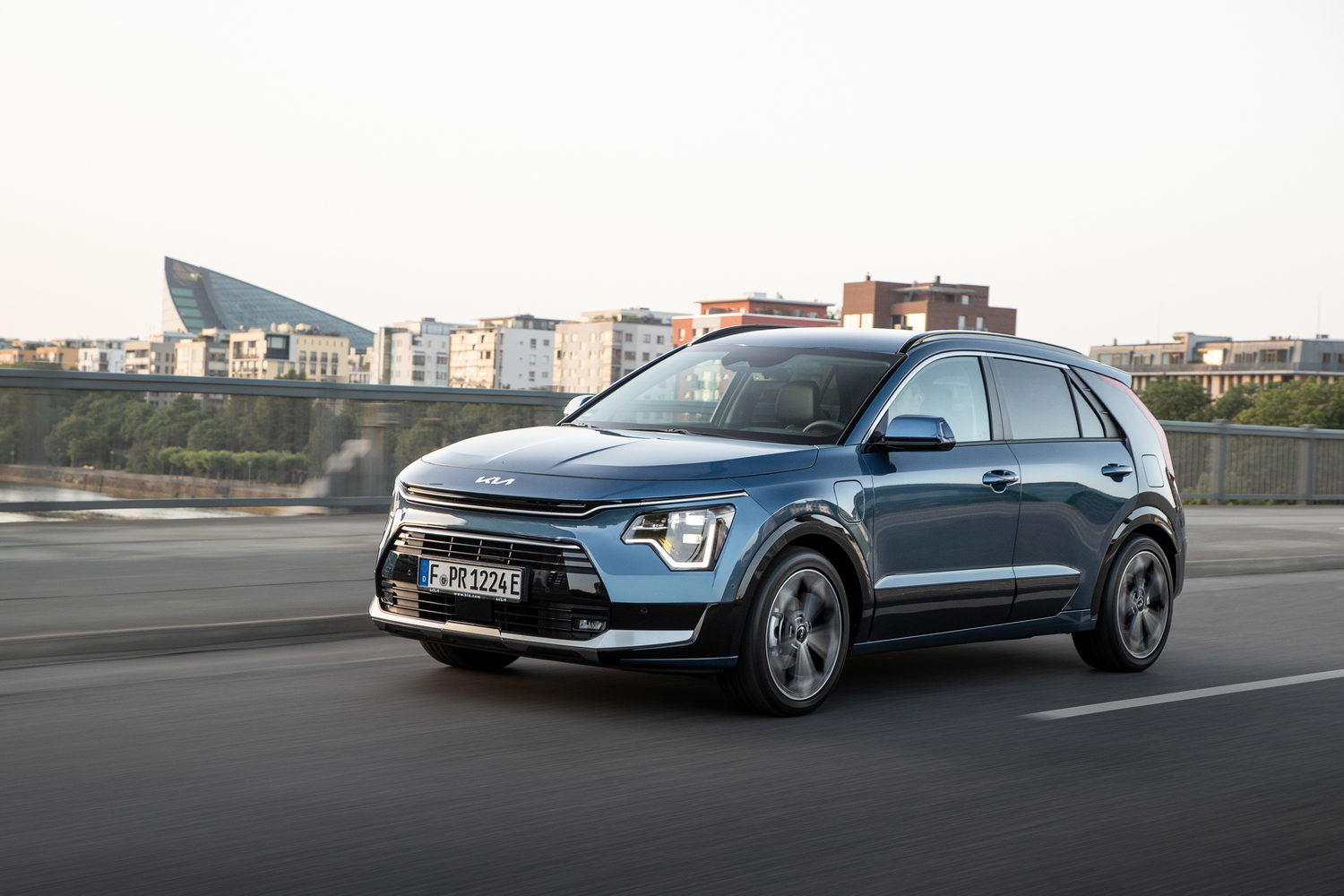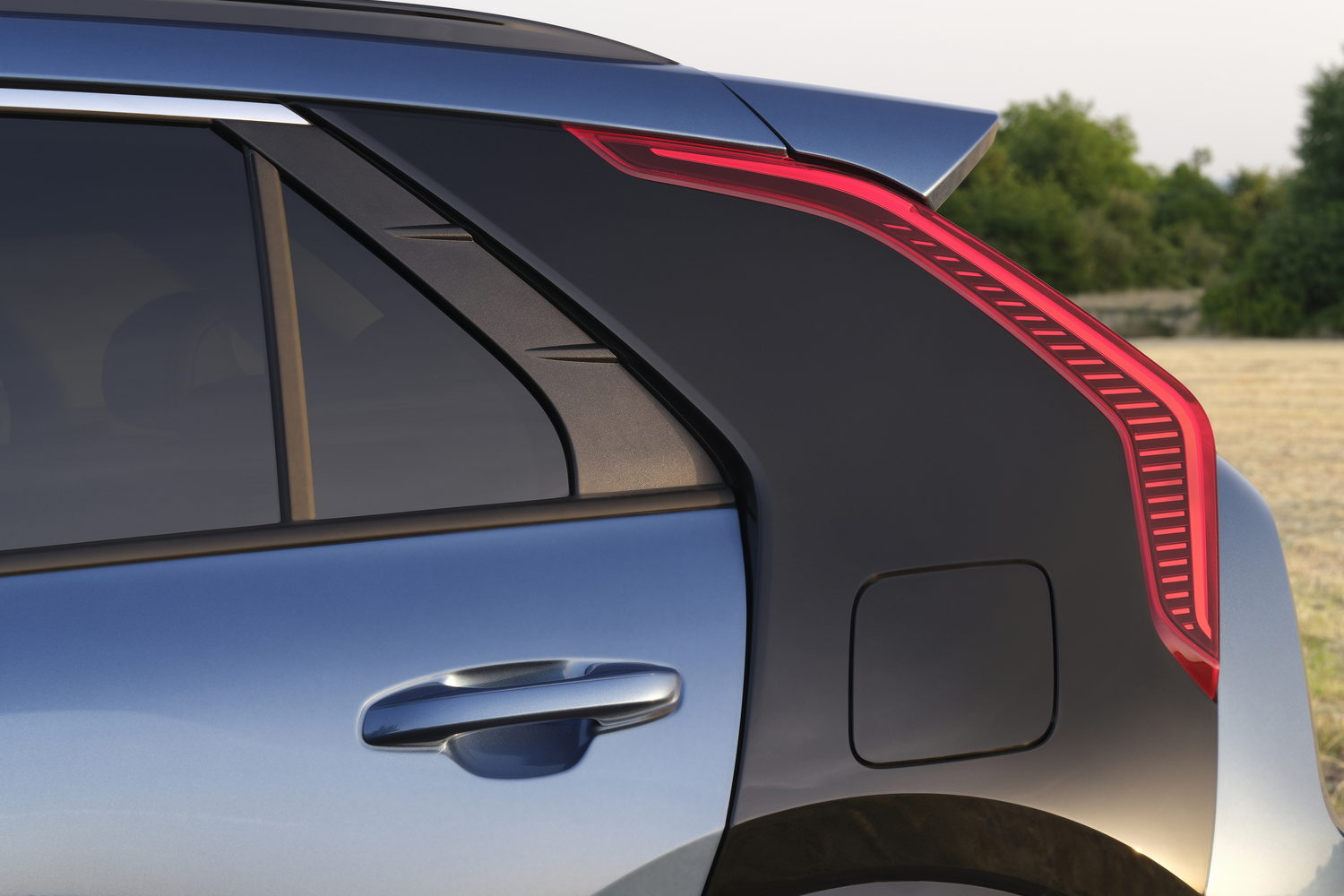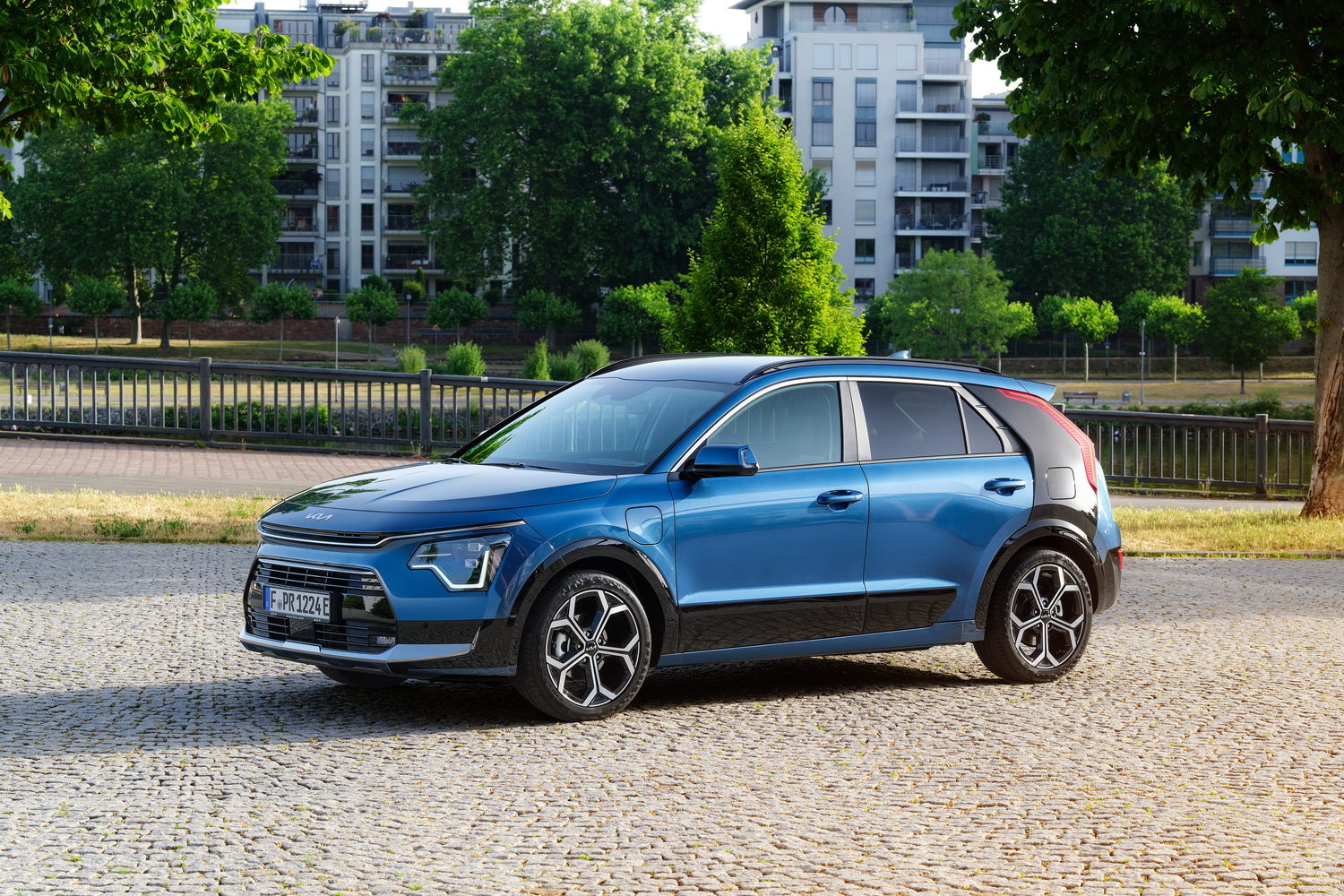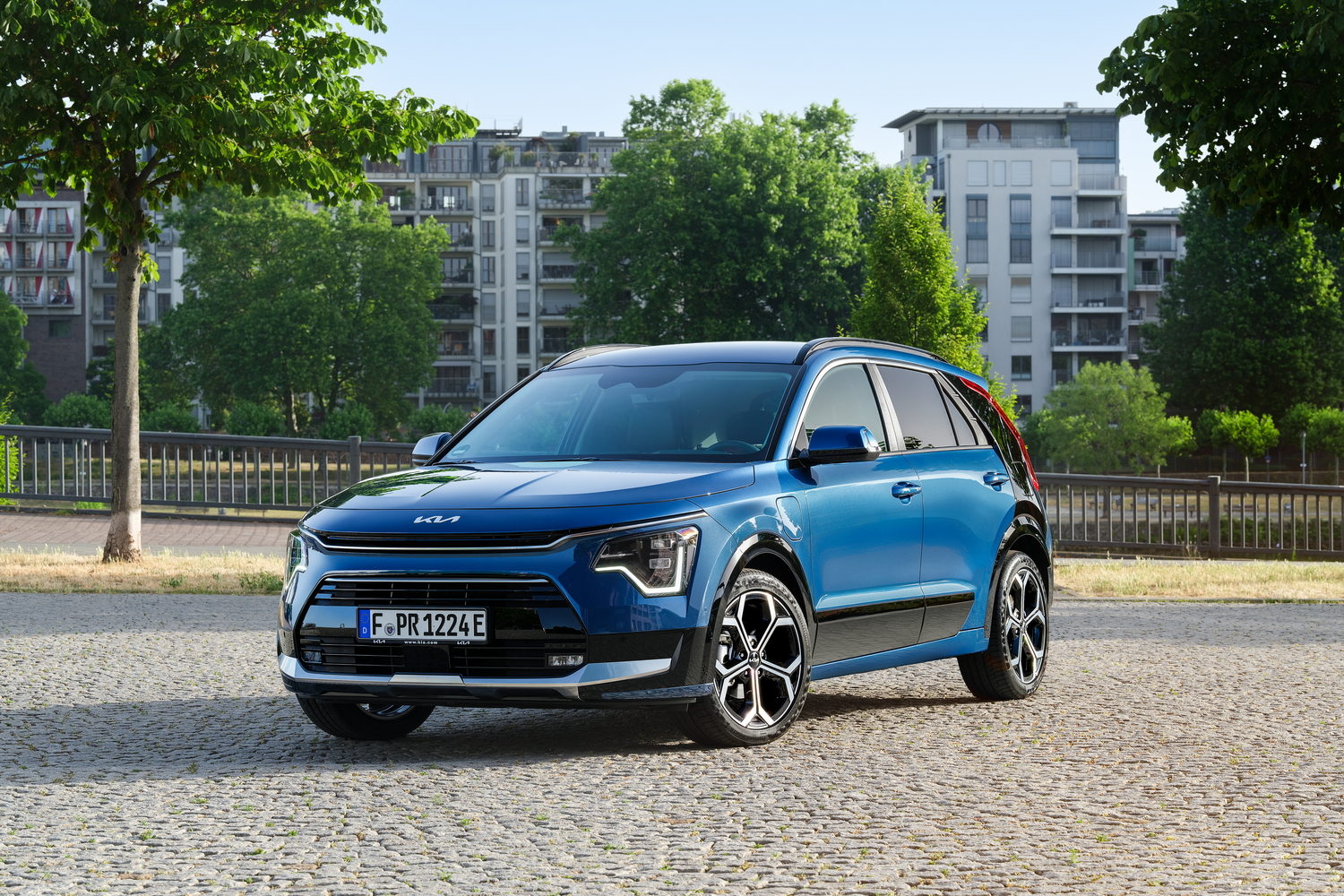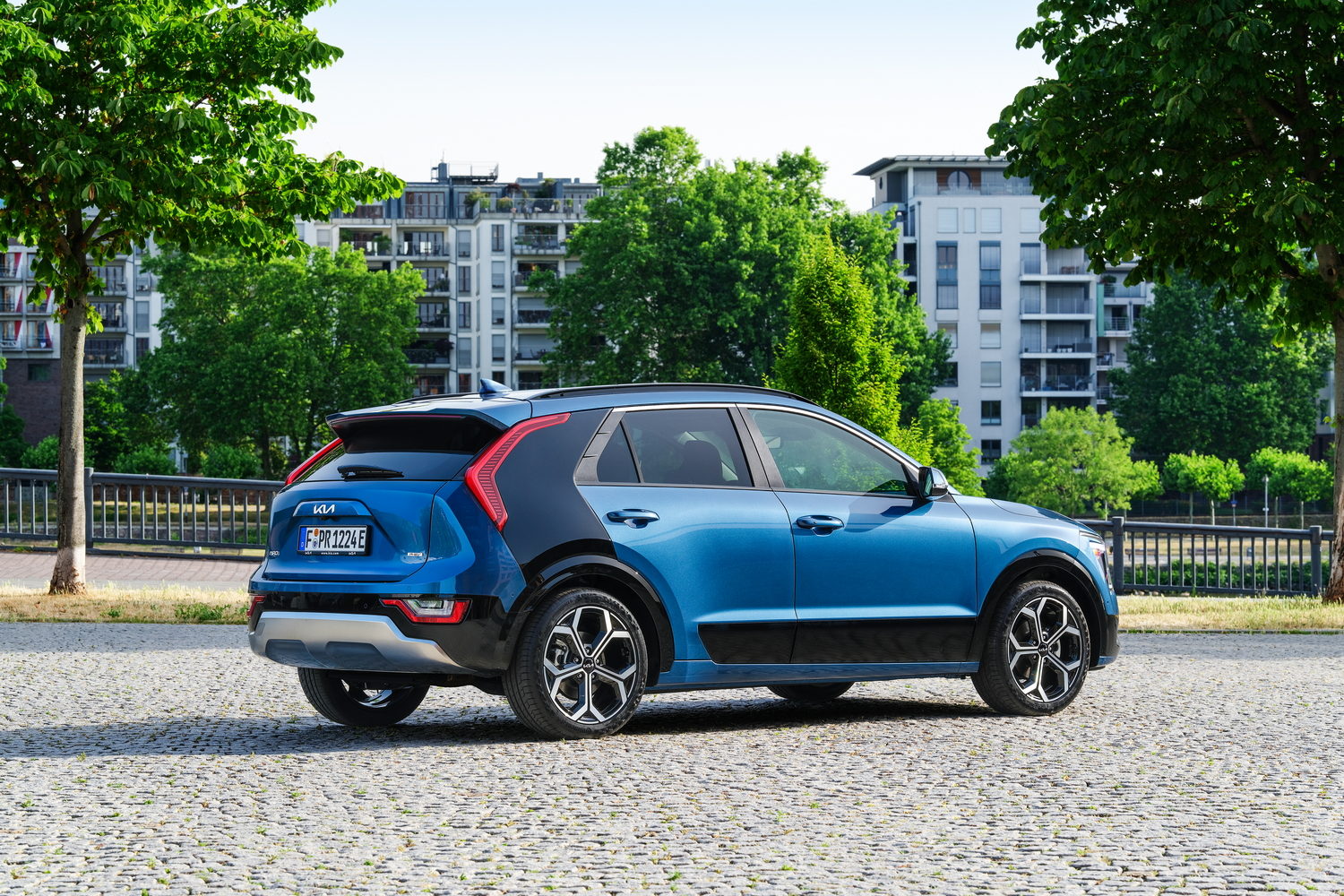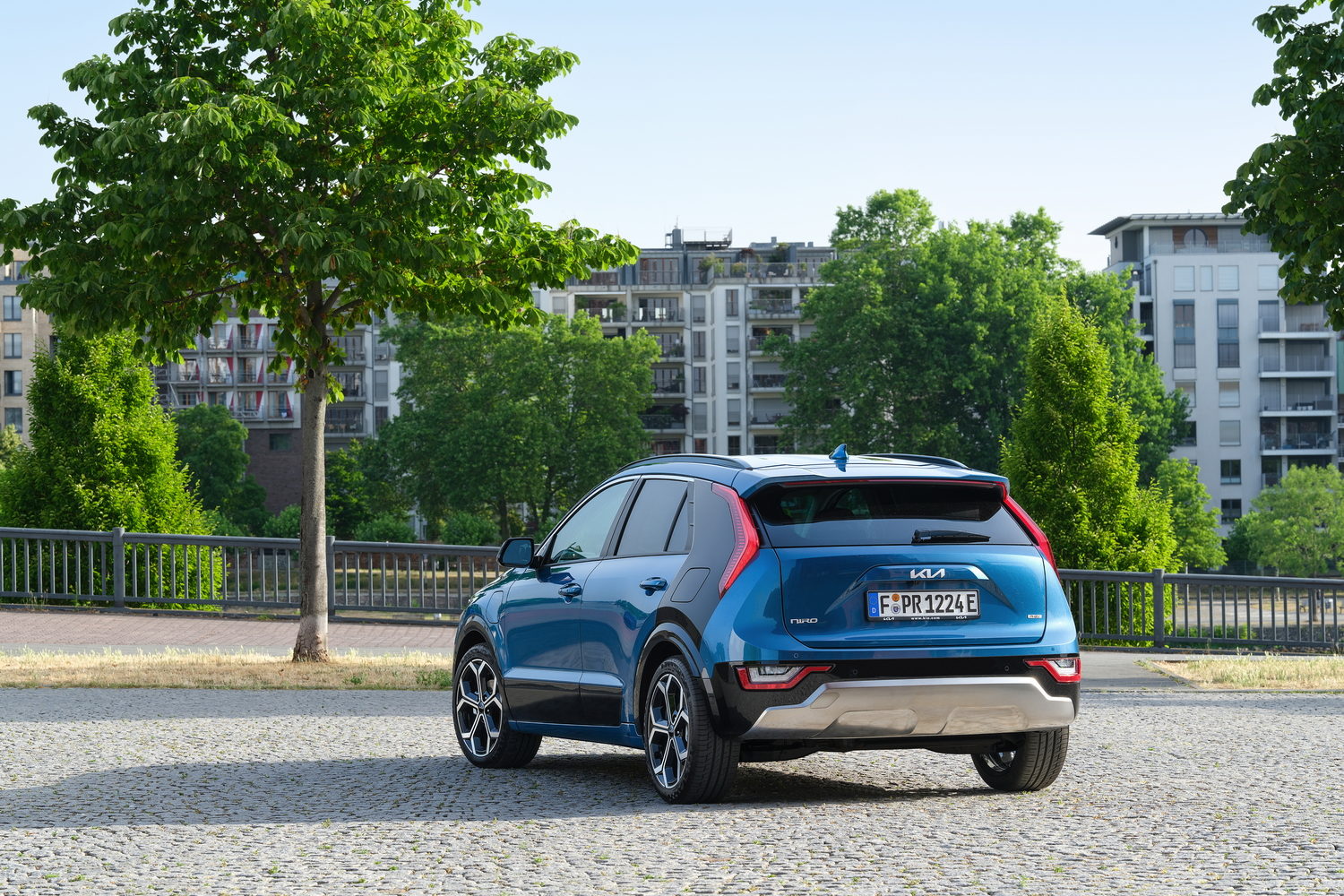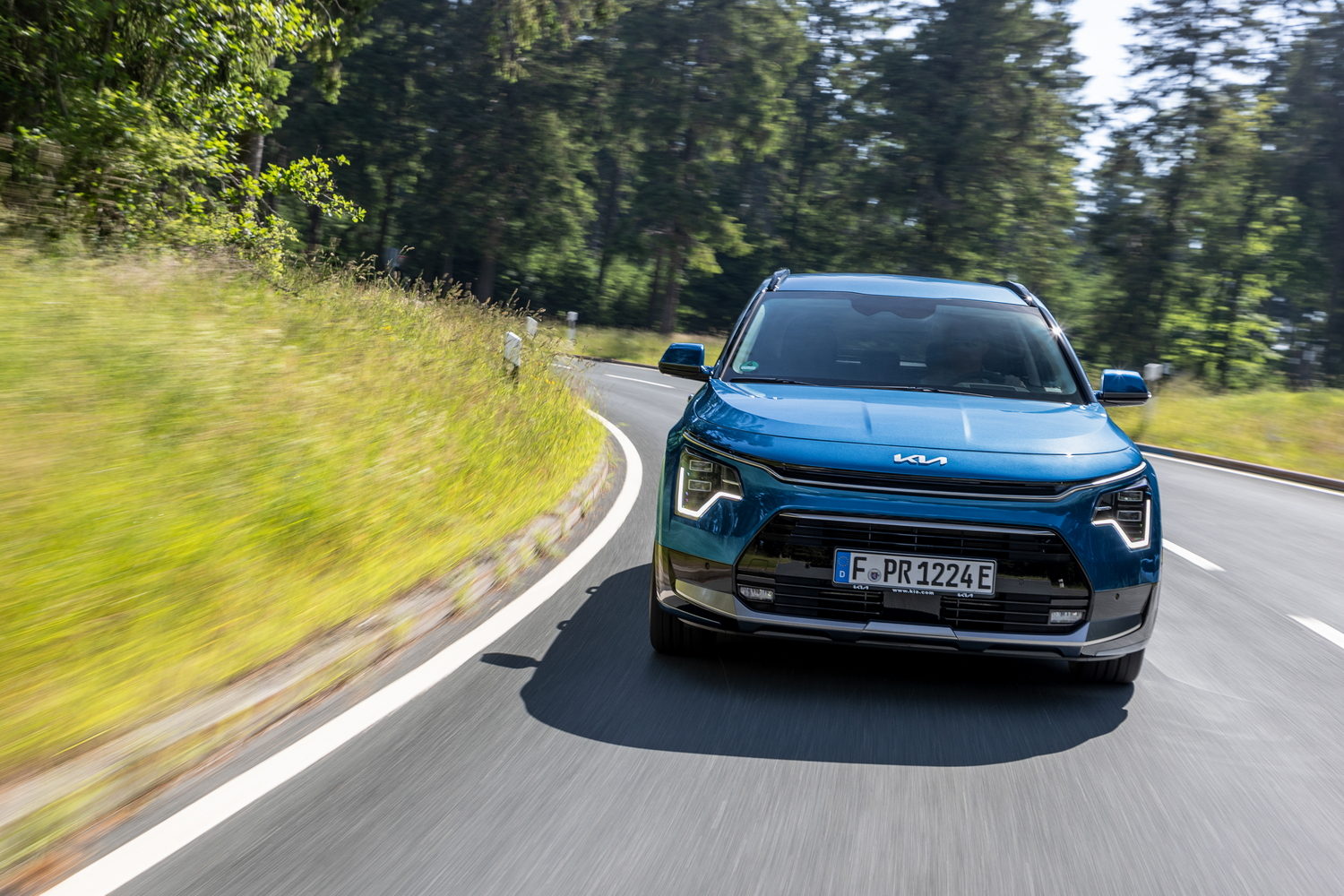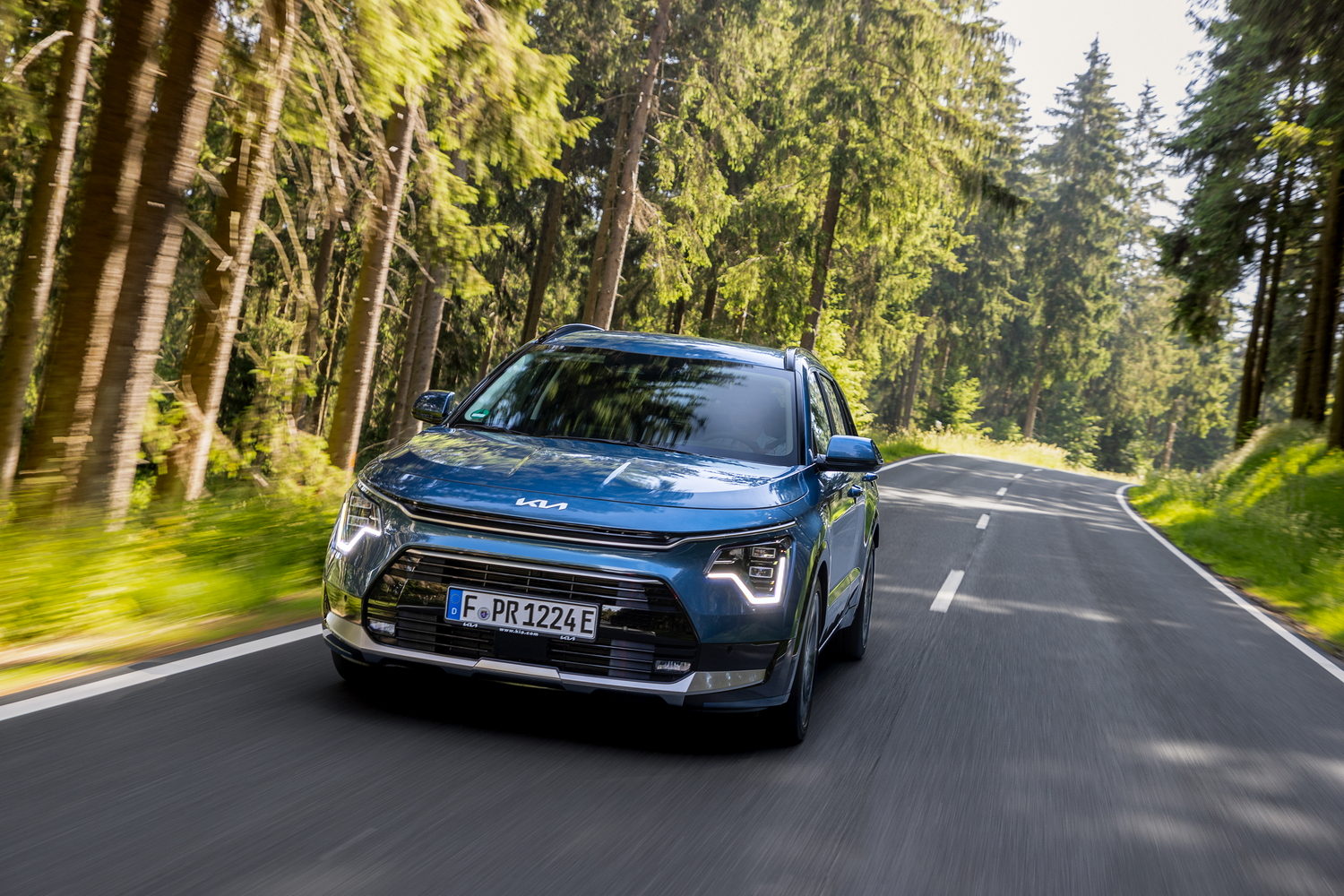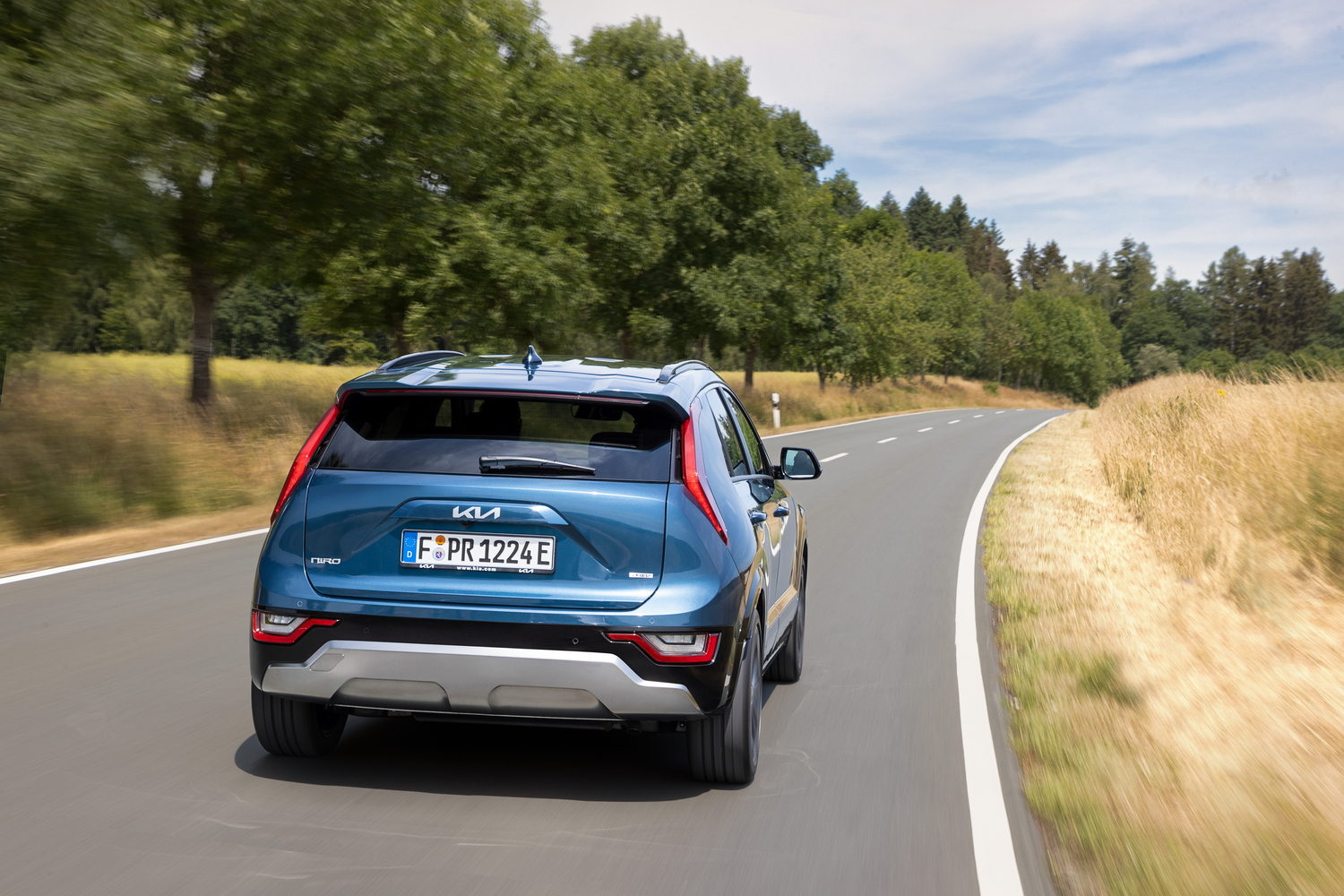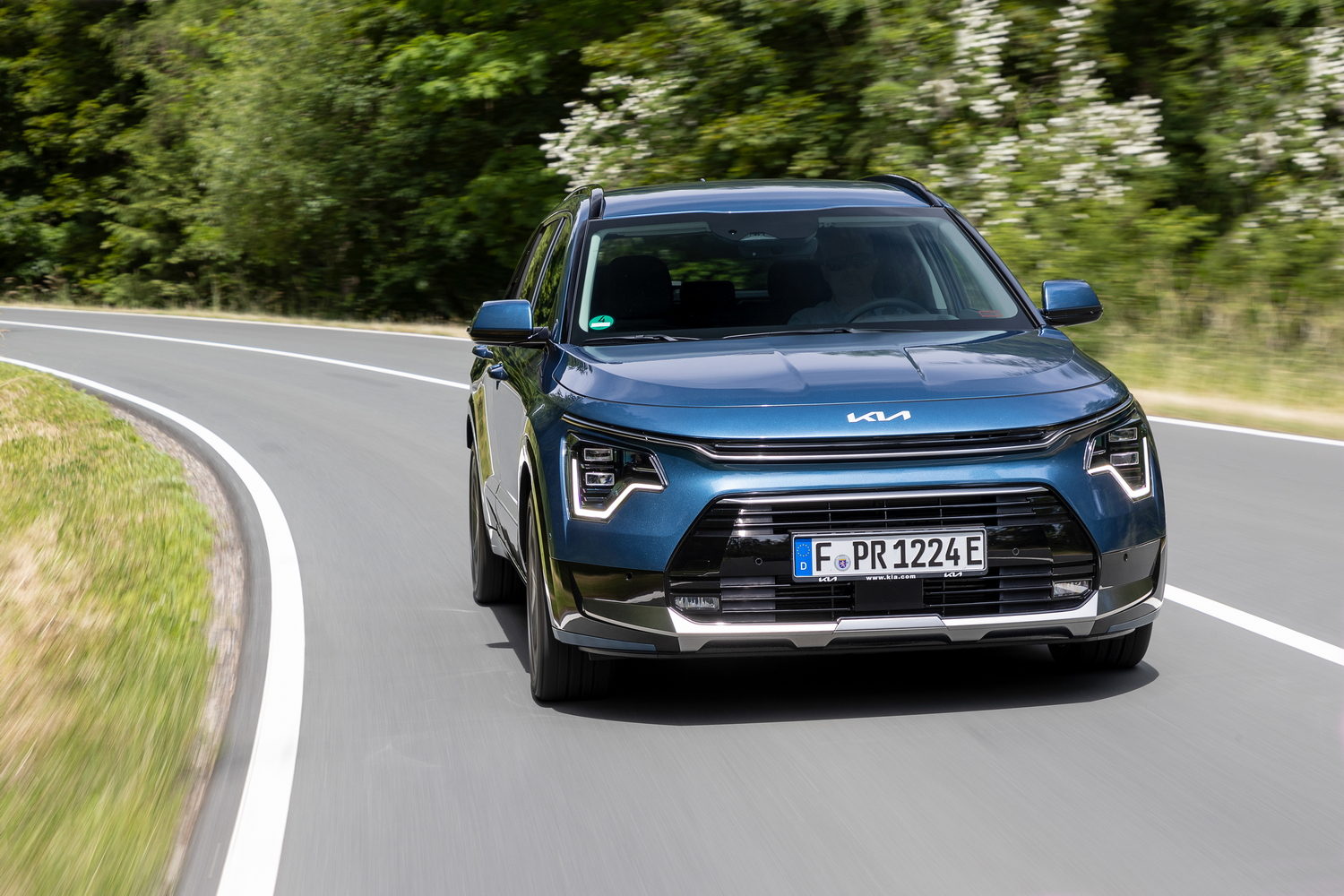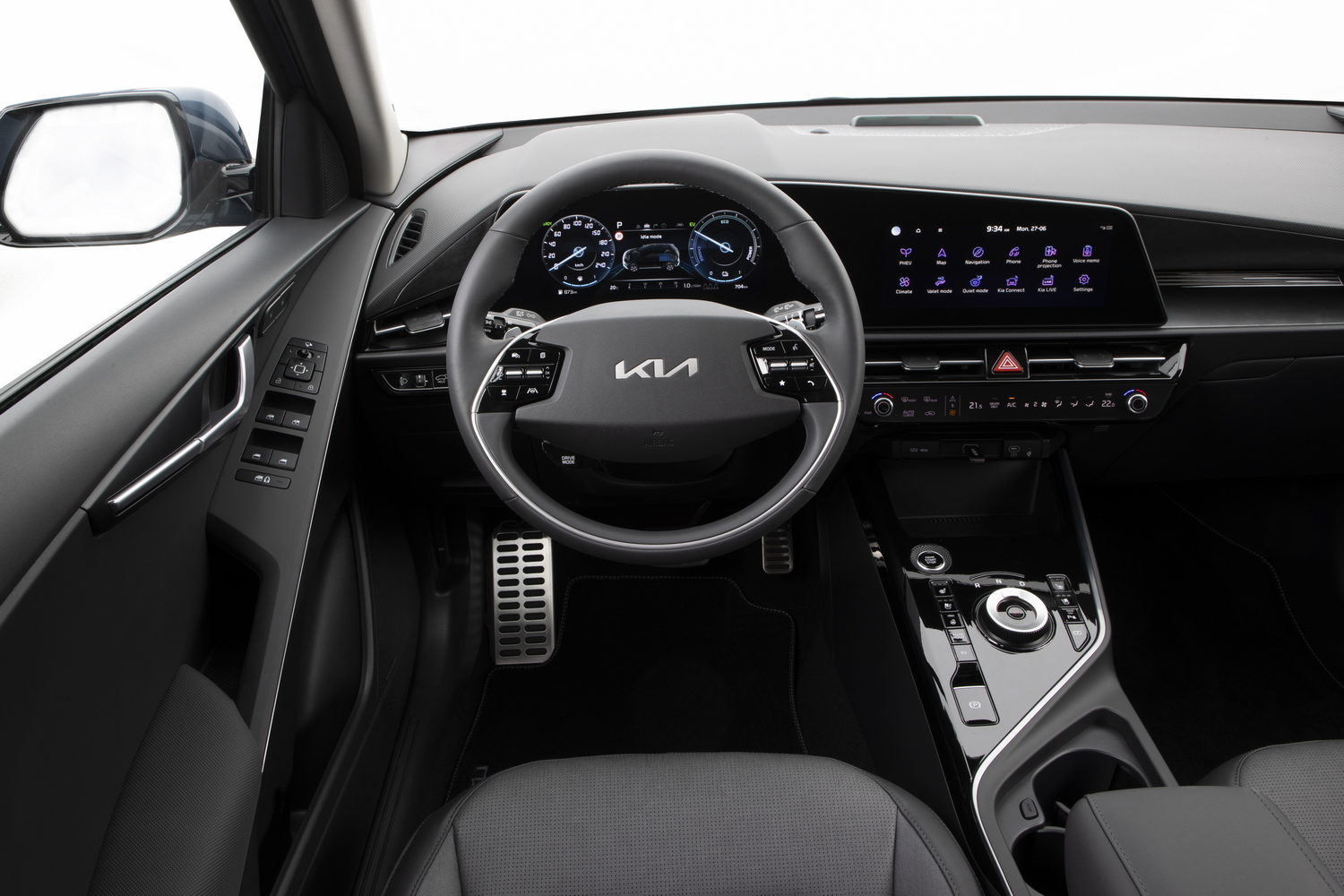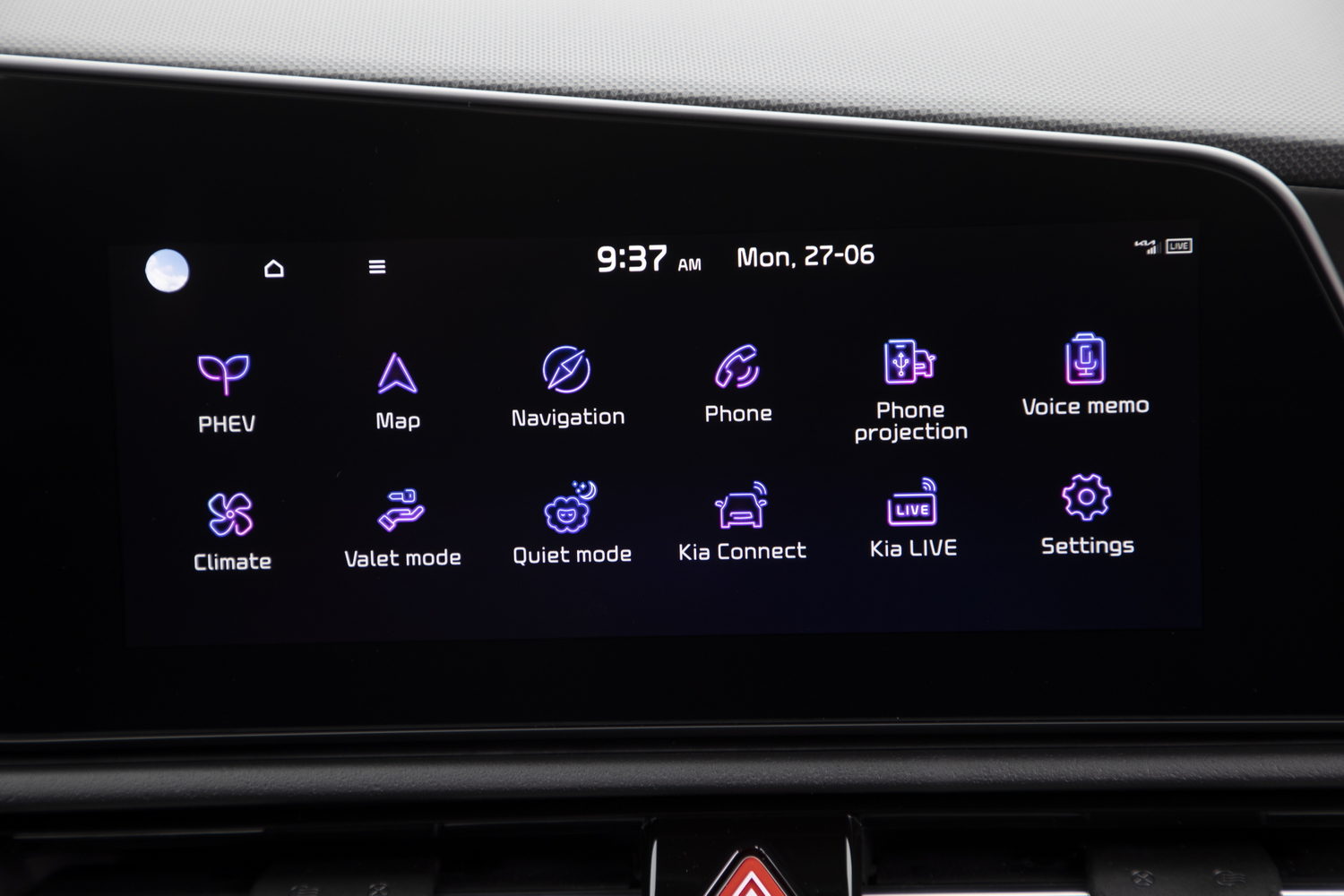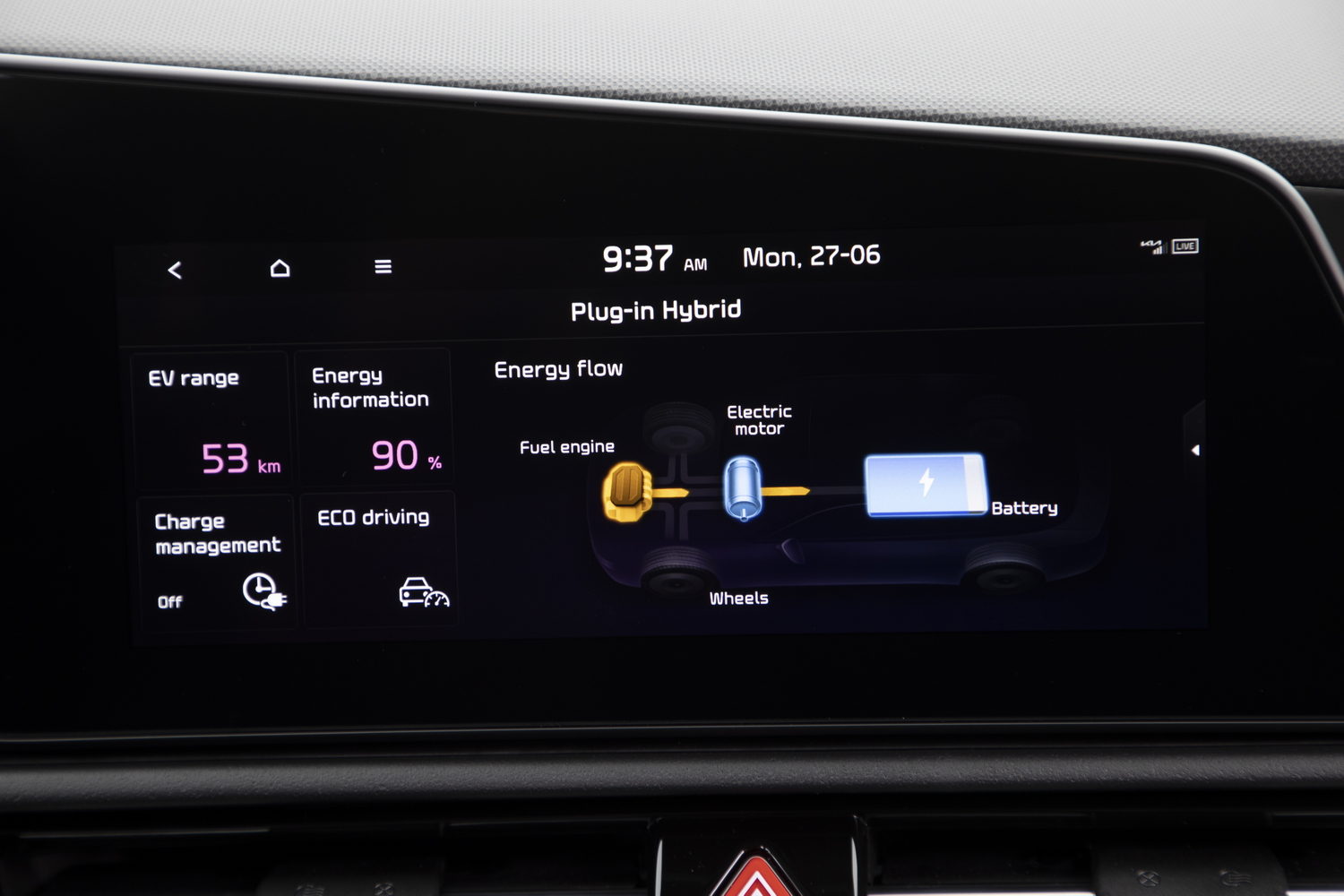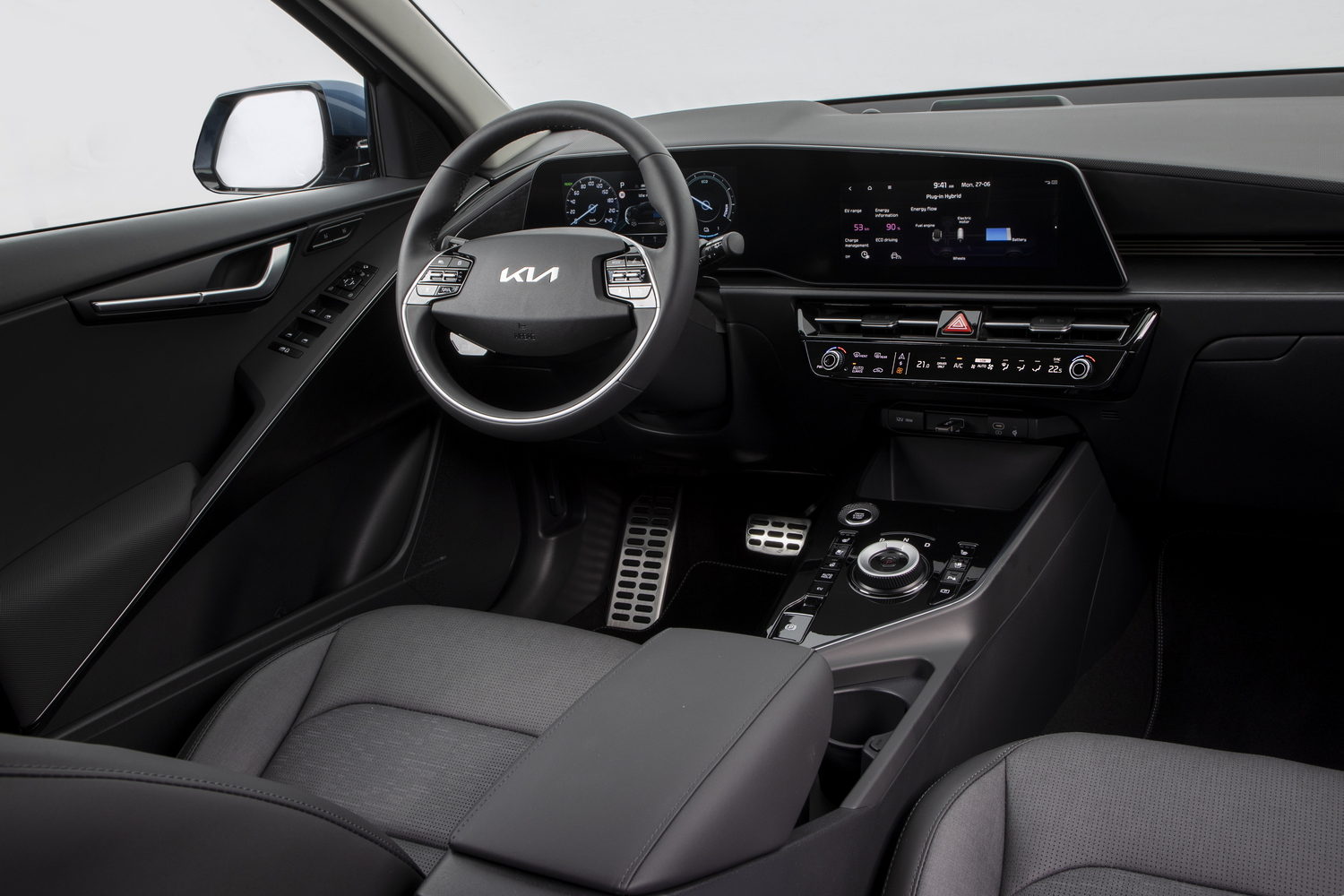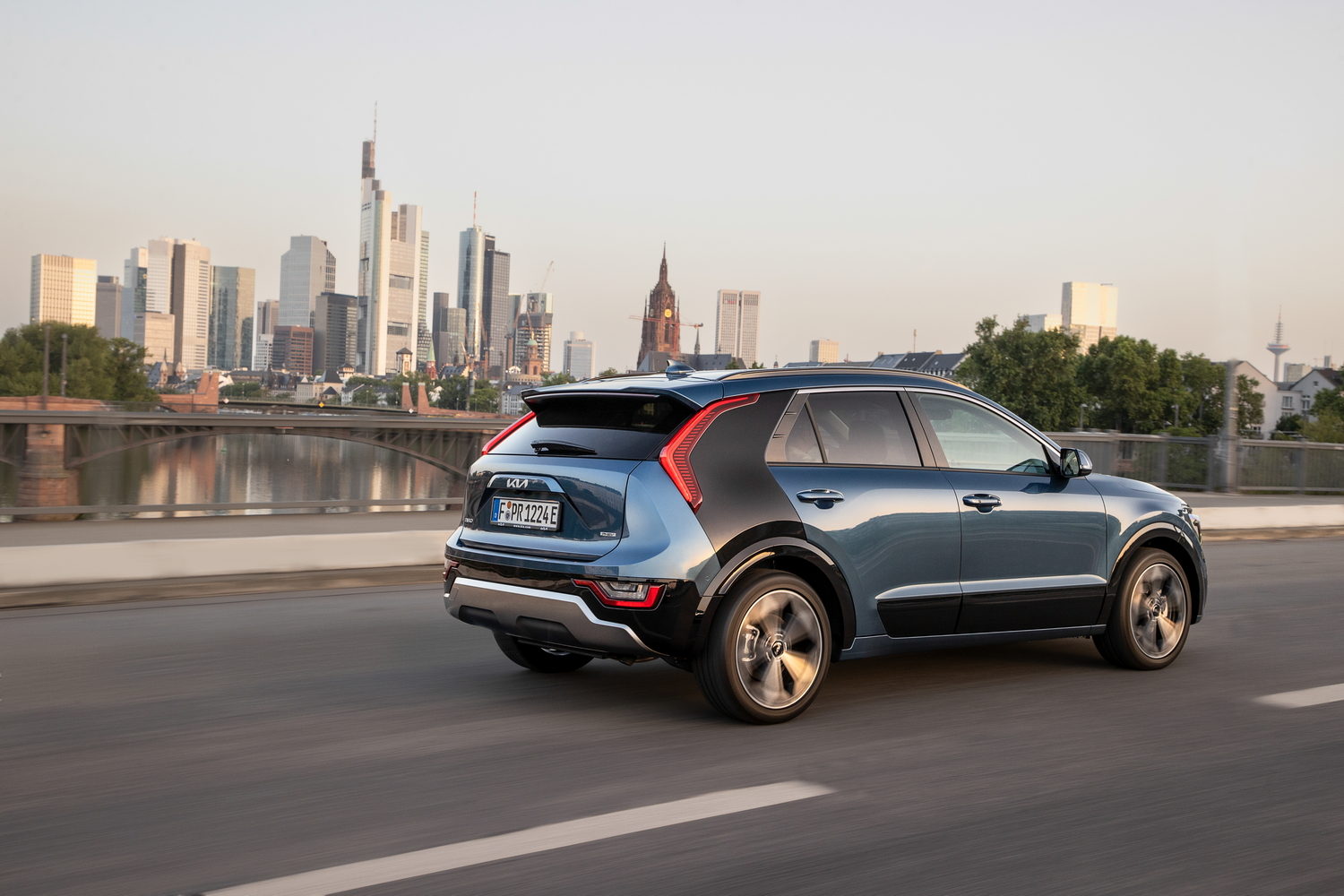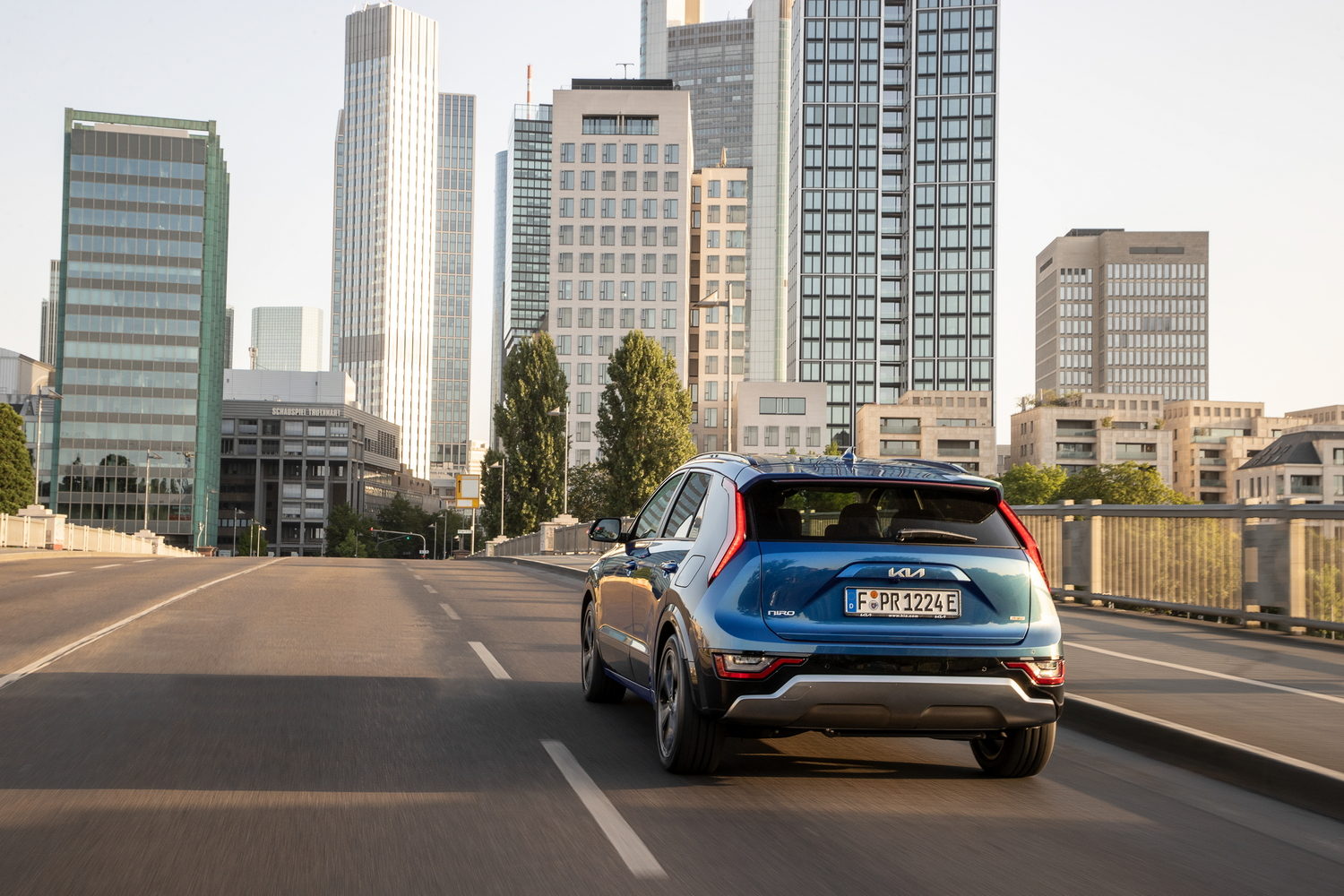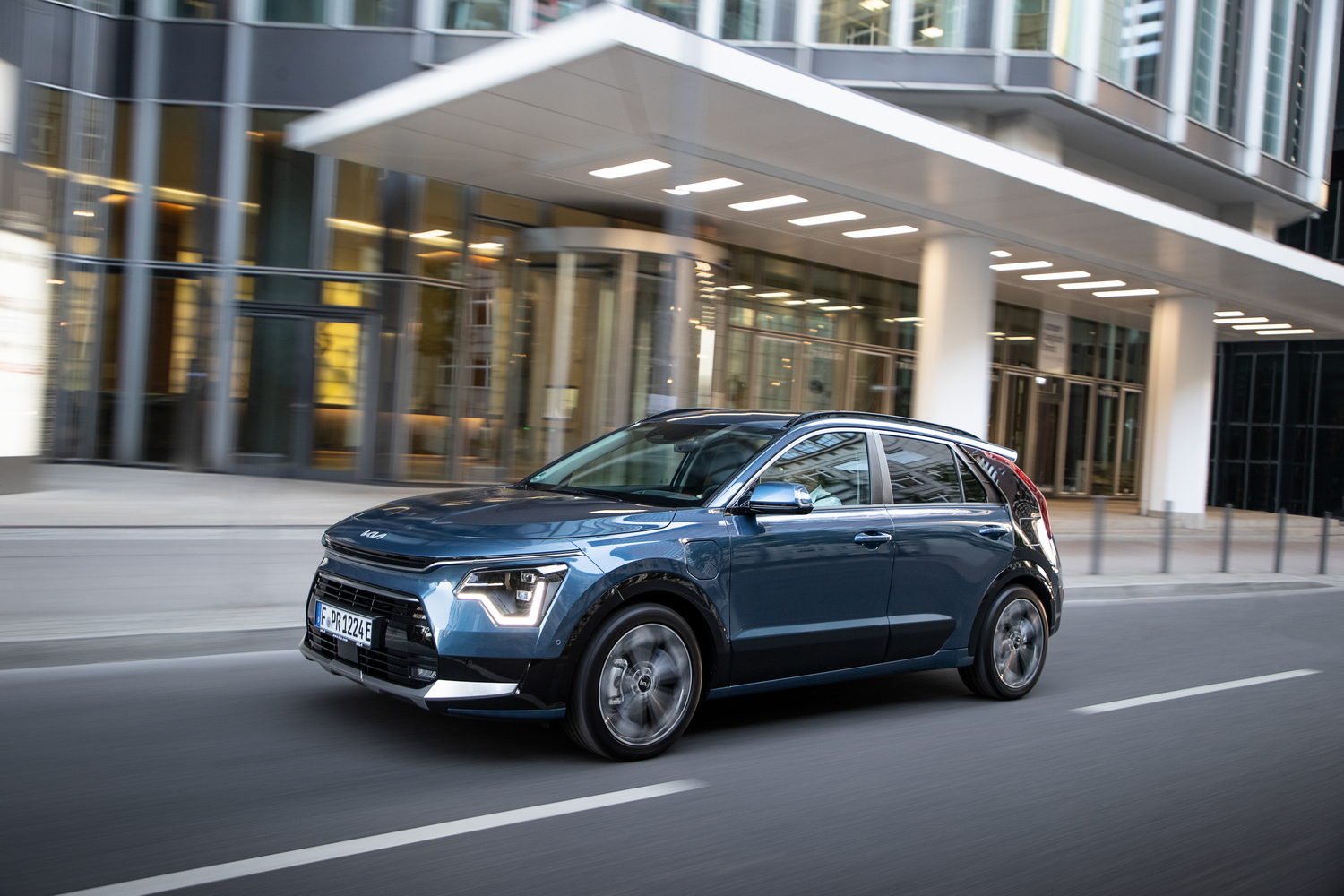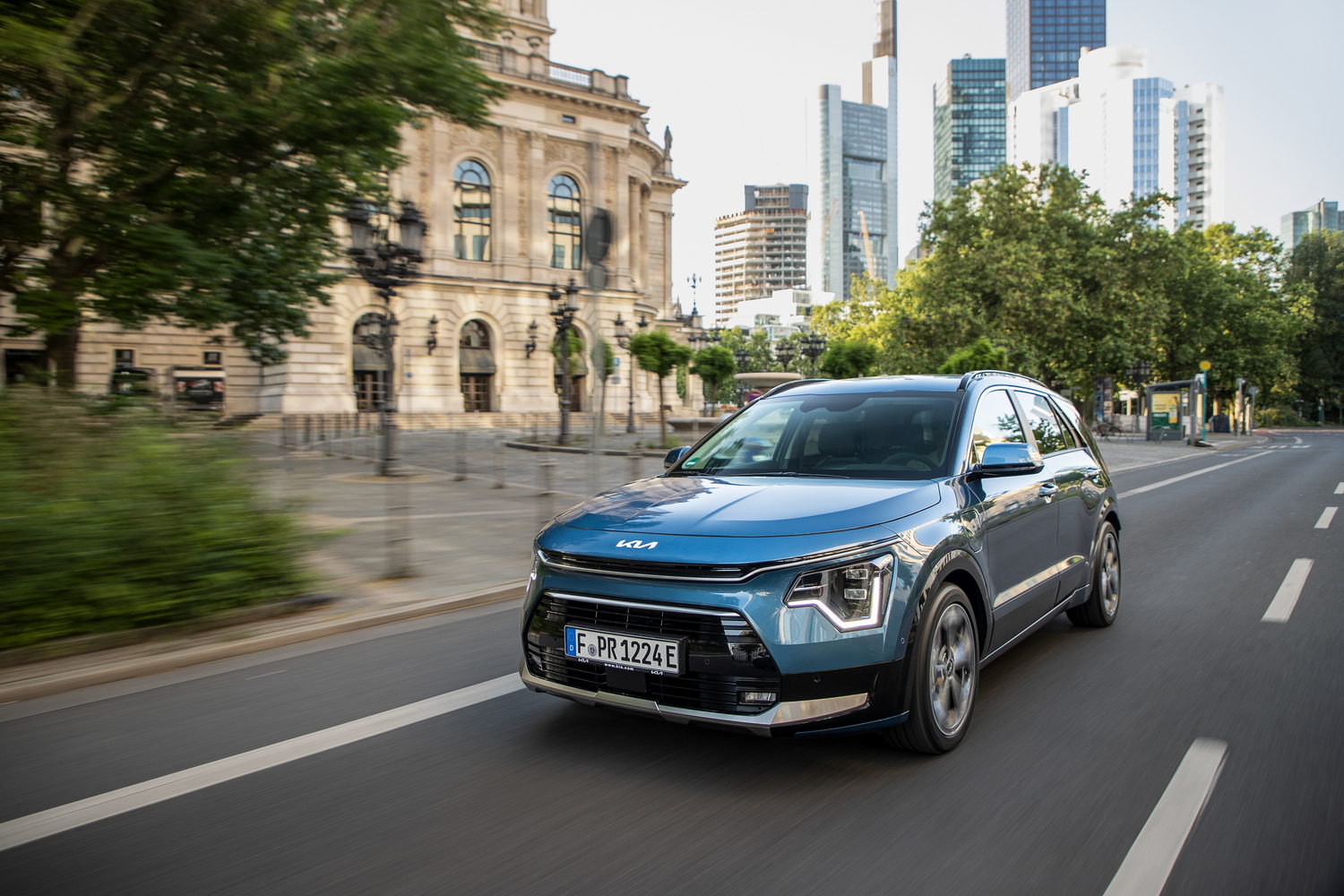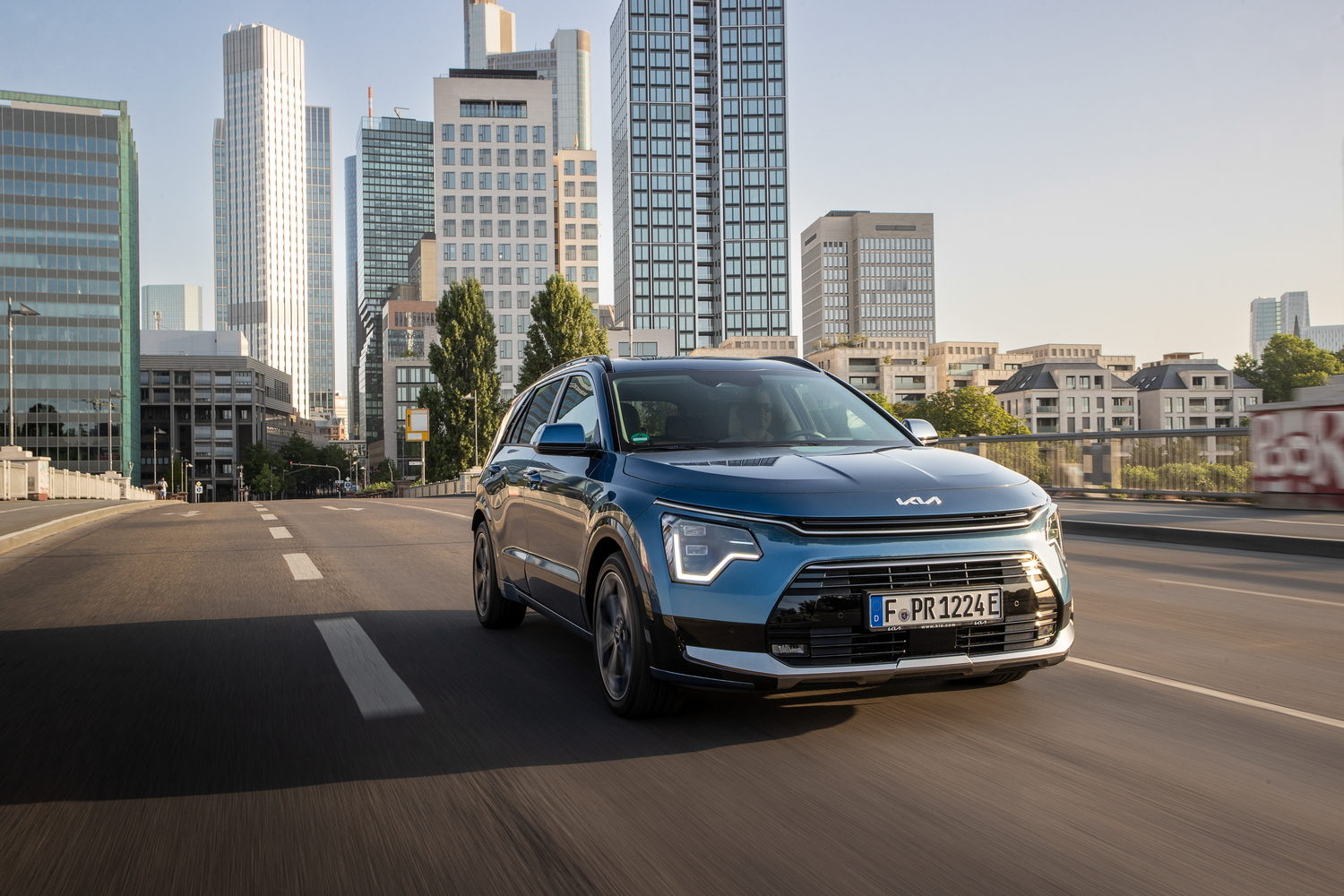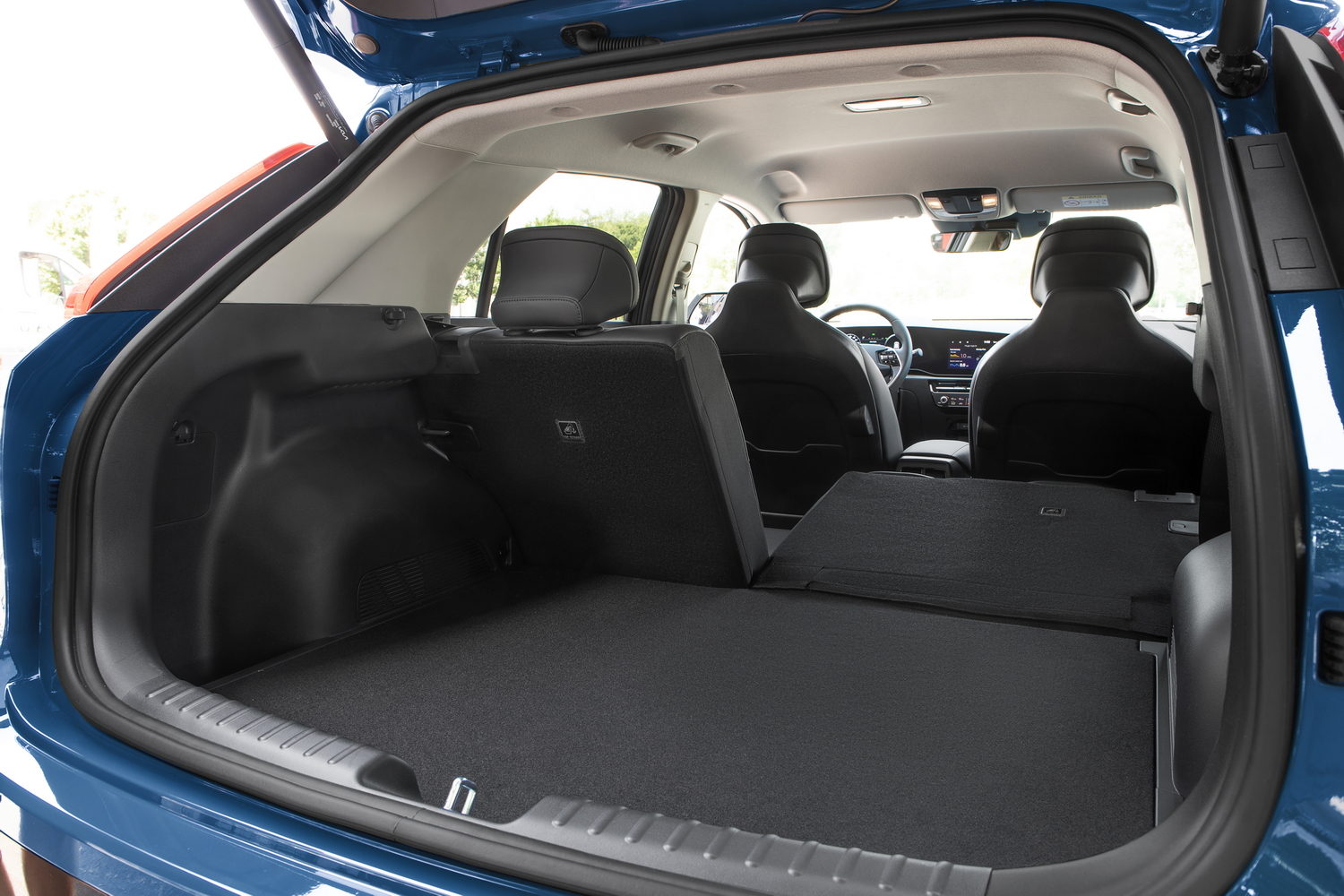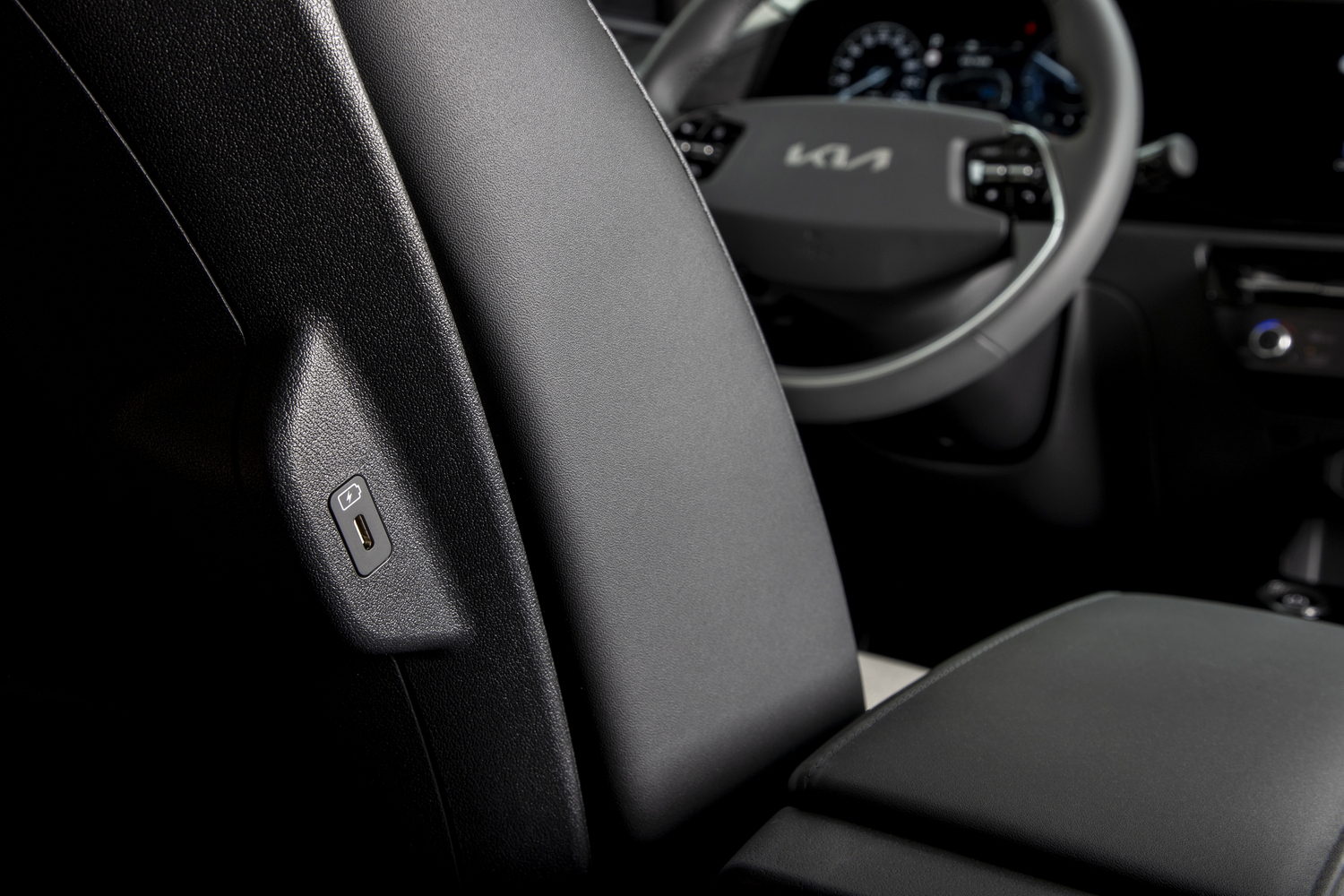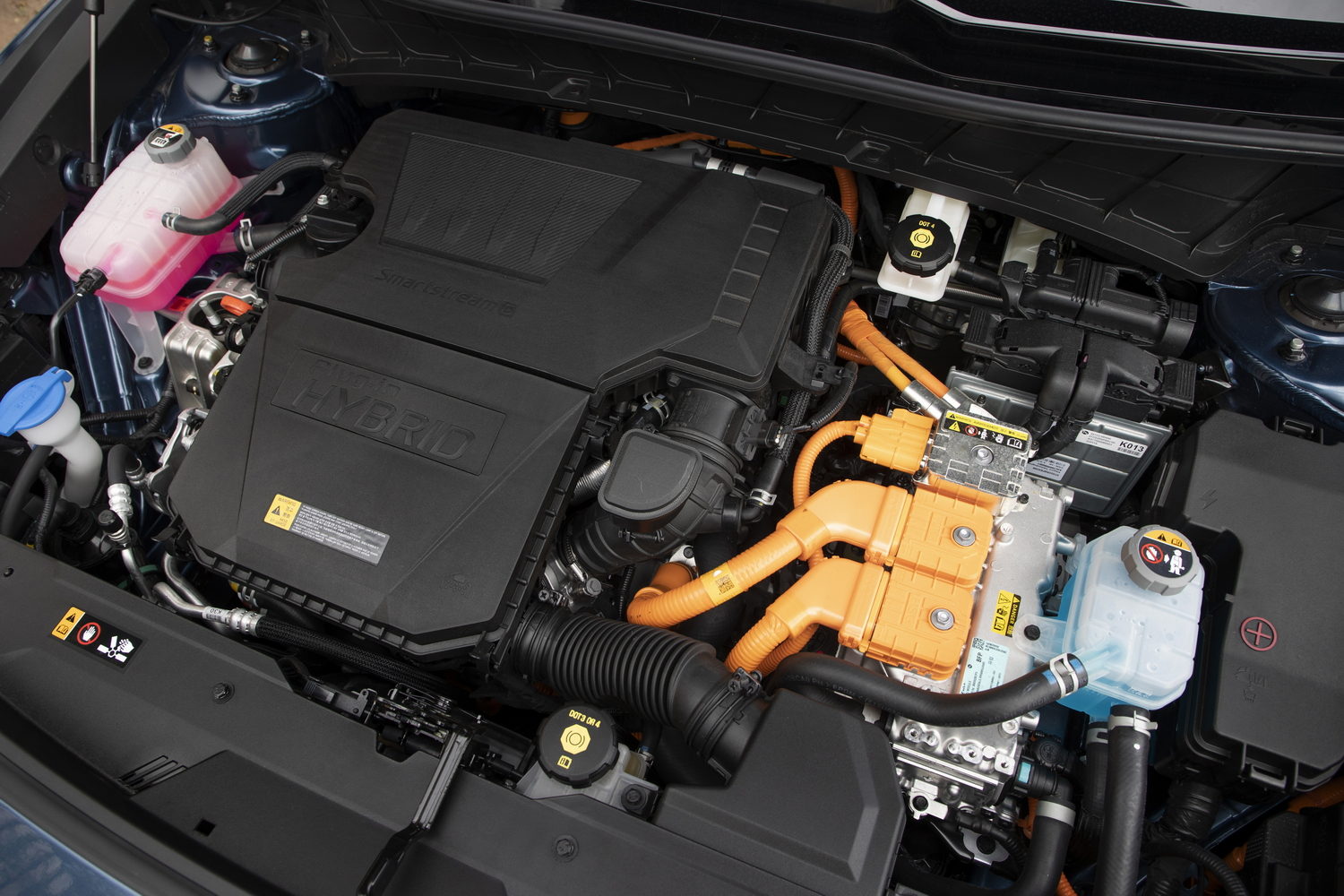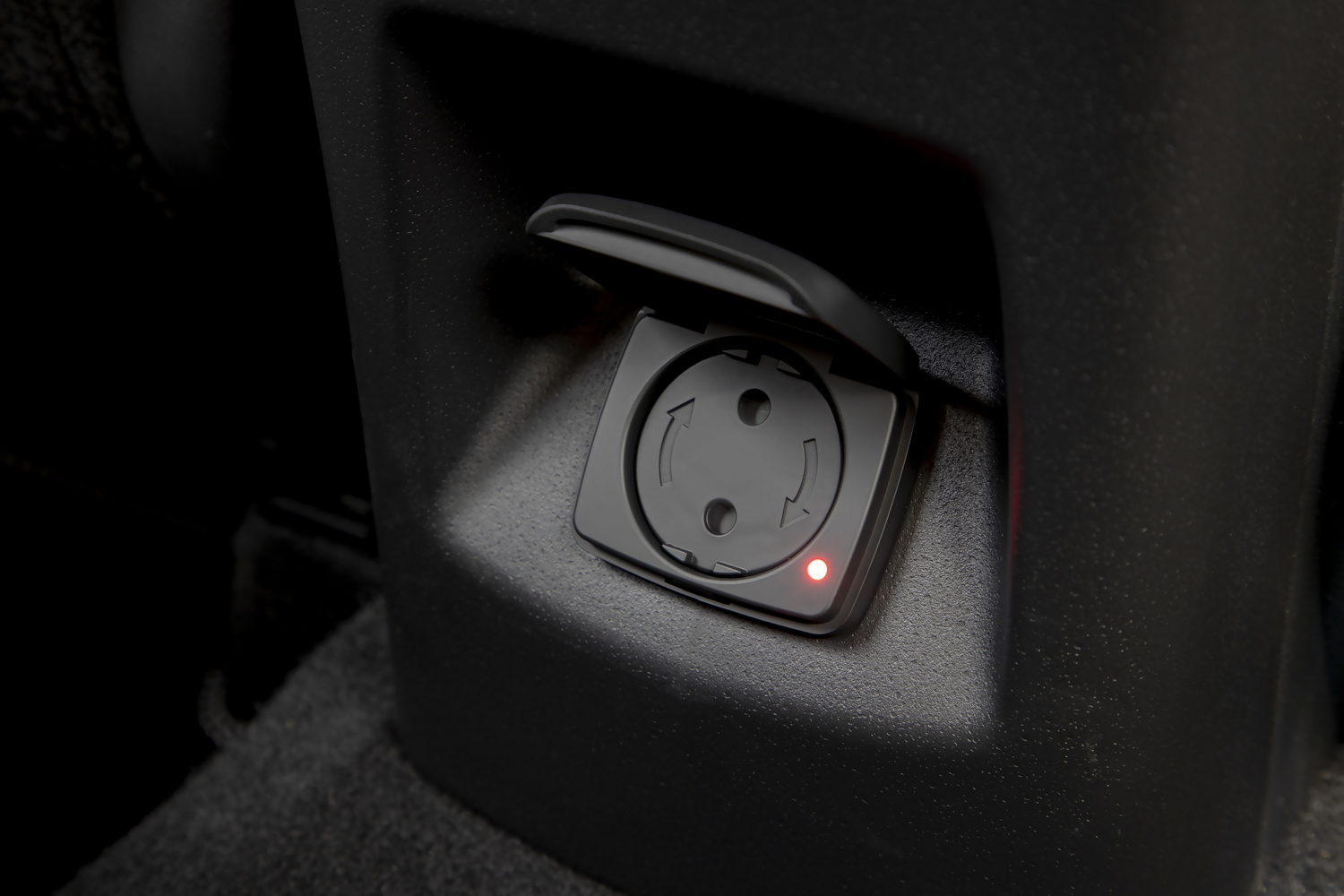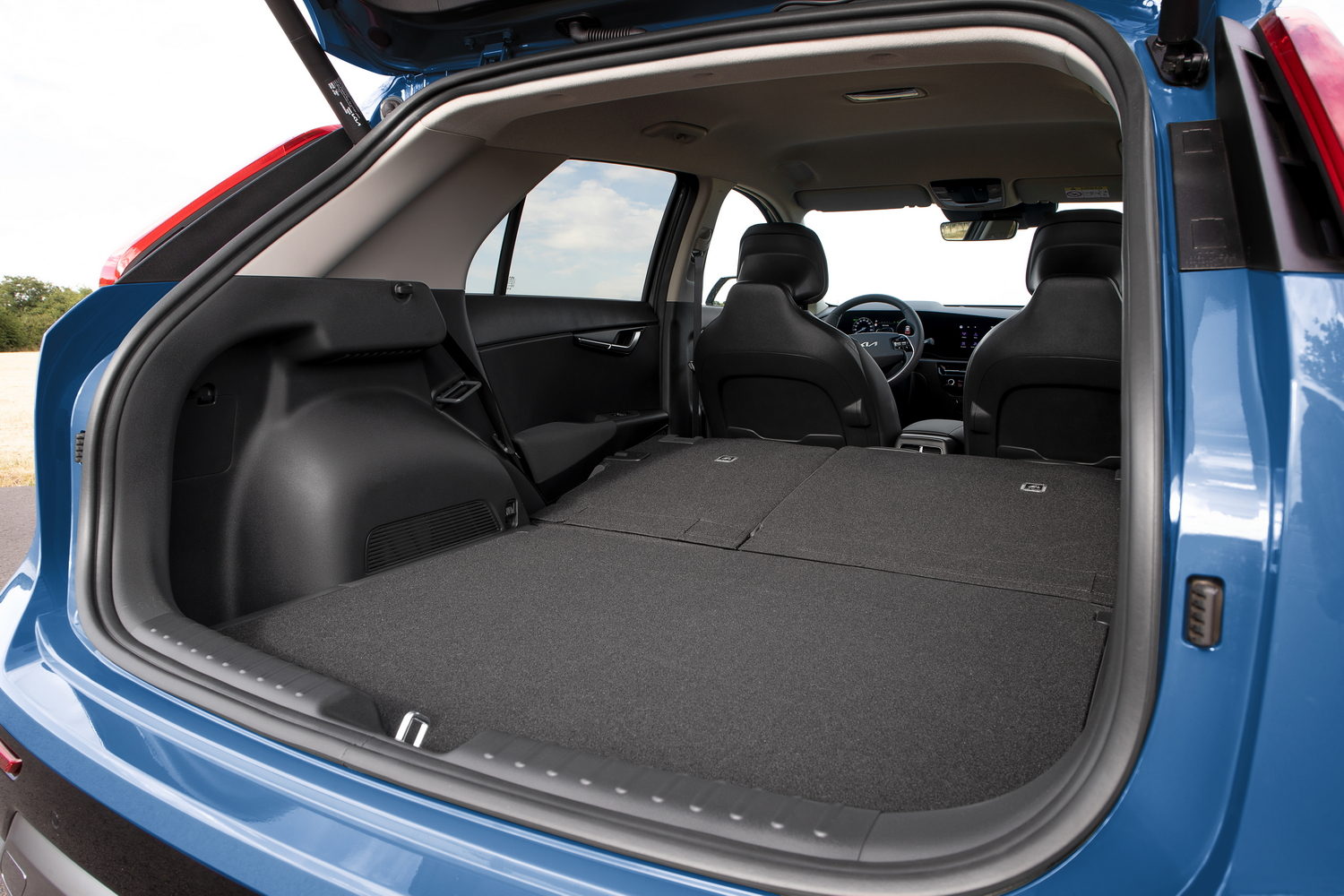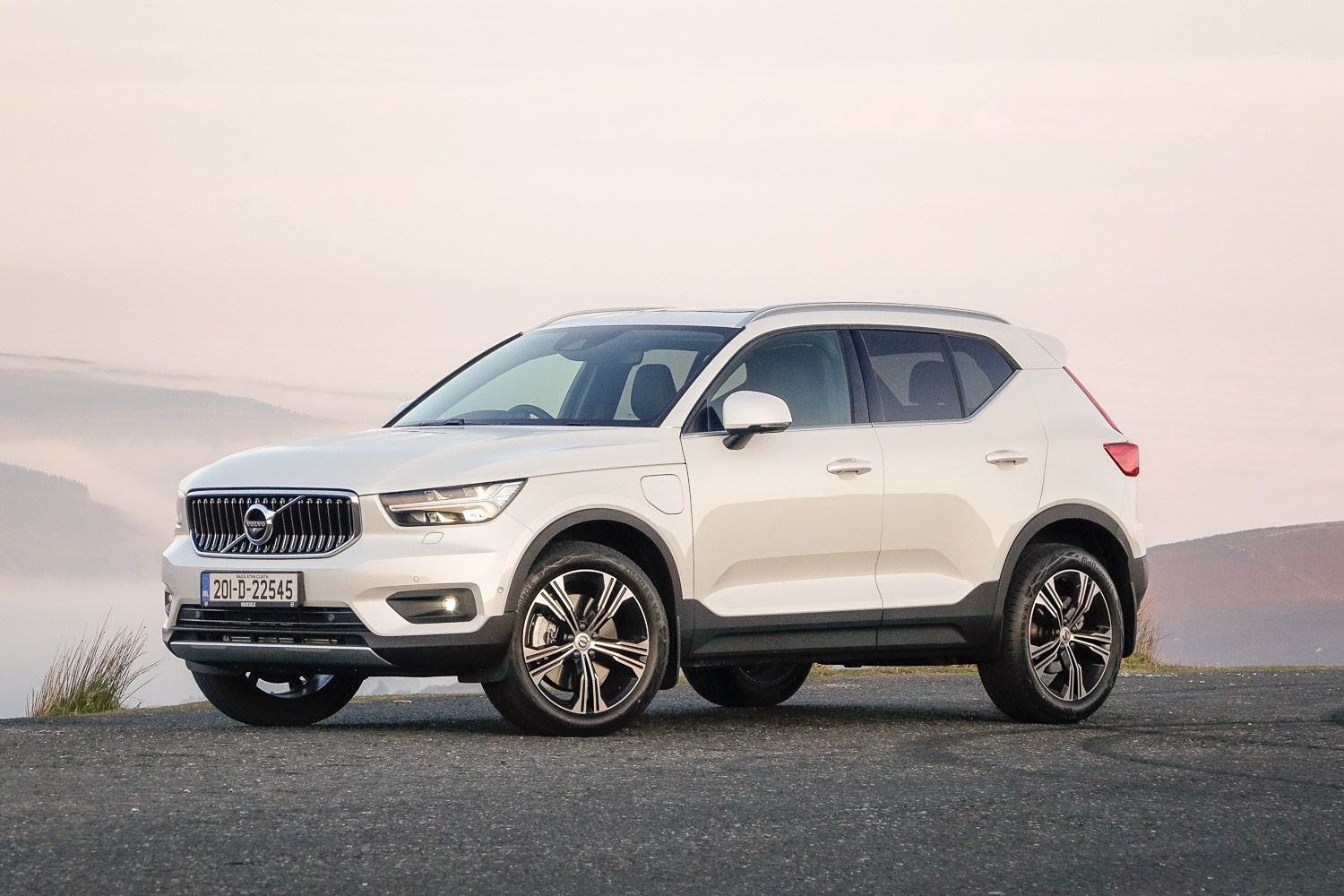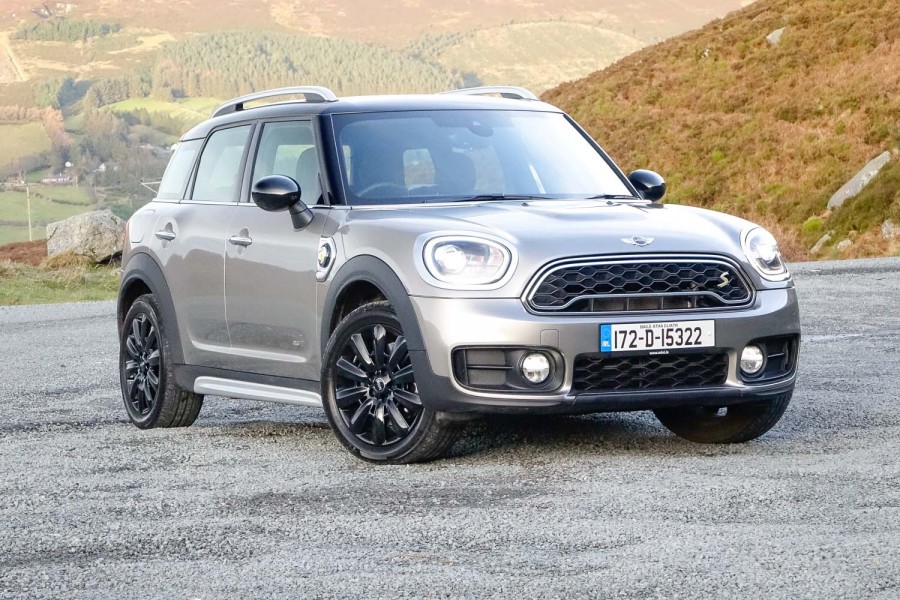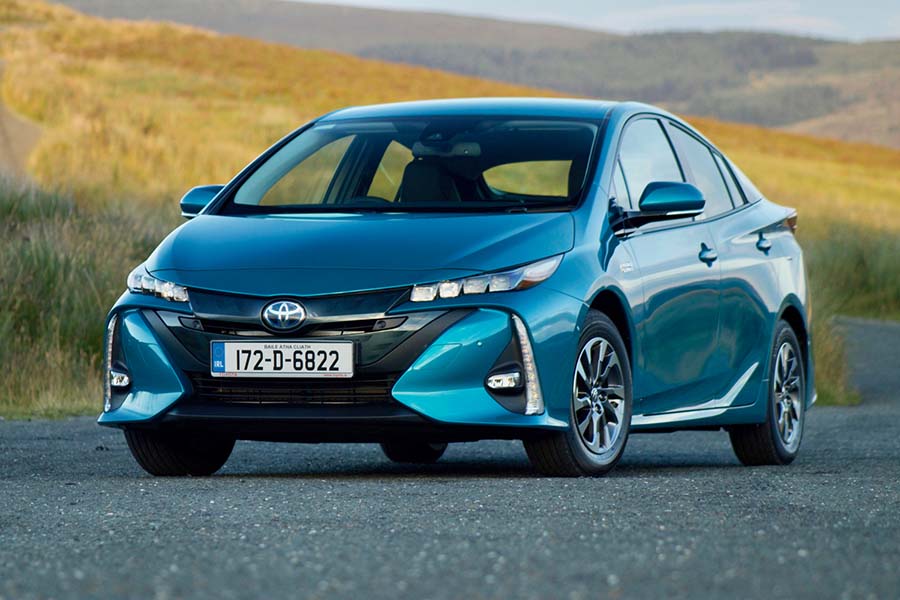Kia has refreshed its entire Niro range, bringing us heavily updated versions of the electric e-Niro (now known as the Niro EV) and the 'standard' hybrid Niro (Niro HEV). Sandwiched between those two versions is the Niro Plug-In Hybrid (or Niro PHEV, for short), which has arguably had the biggest update of any car in the Niro range. Now bestowed with a bigger battery, lower emissions and improved range, as well as the new interior and exterior design common to all new Niros, is this now the compact SUV of choice?
In the metal
Even the most disinterested consumer will find it easy to spot the difference between the new Kia Niro and its predecessor. The more futuristic design is partly inspired by the larger Sportage SUV, hence the angular new headlights and the two-level grille. It also gets a new 'sideblade' arrangement on the flanks, with customers offered the chance to specify a contrasting colour for the chunky new panels.
But while it's easy to differentiate the new Niro from the old model, it's harder to tell the difference between this Niro - the Niro Plug-In Hybrid, or PHEV - from the other versions of Kia's latest SUV. For those who simply must know, the major differences is in the grille, which is different to that of the electric Niro (which was once called the e-Niro but is now called the Niro EV).
The charging port for the batteries is different, too, with the Niro EV getting a kind of tongue arrangement below the upper grille and the Niro PHEV positioning its charge port just forward of the front door. The final option in the range, the hybrid Niro HEV, doesn't have a charging port at all. Of course, if all that sounds a bit complicated, you could always look at the badge on the tailgate.
Inside, there are even fewer ways to tell the Niro variants apart, but the new-look cabin will definitely come as a surprise to drivers of the old Niro. The dashboard design is inspired by the Kia EV6 electric hatchback, so the whole thing is dominated by a brace of digital displays. In the middle is the central touchscreen, complete with media and navigation features, while there's another display behind the steering wheel that operates as an instrument cluster. High-end models can also be specified with a head-up display.
The on-board tech is pretty solid, with crisp displays and logical menus, making it easy to navigate and easy on the eye as well. It isn't quite as fancy as the systems found in some modern Volkswagen Group cars, but it's more stable and more intuitive to use. Which is a good thing, because the touchscreens aren't the only tech features inside the new Niro.
Below the central display is another 'hybrid' control panel (no, it has nothing to do with the propulsion system) that combines two physical rotary dials with a row of touch-sensitive switches. A touch-sensitive button at the side can switch the display from heating and ventilation - in which case the dials are used to change the temperature on the two-zone climate control - to navigation and infotainment, which sees the whole display change. Then the dials are used to turn up the volume and tune the radio. The system is complicated and extravagant, but less awkward to use than it sounds.
Other than that, the usual Kia rules apply to the new Niro. Build quality is largely very good and what switches there are feel well engineered, but there are some catches, including the occasional hard plastic.
There's a practicality issue with this Niro PHEV, too. Where the Niro EV stores its massive battery beneath the floor, the PHEV's battery lurks beneath the boot floor, cutting the amount of space available. That means while the PHEV's interior is as spacious as any other Niro - and they all have plenty of rear legroom - the boot is the smallest in the range. At 348 litres, it's more than 100 litres smaller than that of the Niro HEV. That said, it's still only slightly smaller than a VW Golf's luggage bay, so it'll be big enough for most customers' needs. And those desperate for more room can always fold the back seats down.
Driving it
The real difference between the Niro PHEV and its siblings, however, is its powertrain. Like its predecessor, the car mixes a 1.6-litre petrol engine with an electric motor and a rechargeable battery, allowing it to cover short-to-medium distances on electrical power alone. But with the arrival of the new Niro, that battery has grown to 11.1kWh, giving the Niro PHEV a range of up to 65km before the battery runs out of charge. Once that happens, however, the petrol engine will kick in, allowing the car to complete its journey like a conventional petrol SUV.
The idea is to create a car that does all the short journeys around town using the battery, but the petrol engine is still there if you can't charge up or you want to head further afield. But aside from the eco-friendliness, the Niro PHEV appeals to more than just the eco-conscious. Low emissions mean low VRT, and that means it's the cheapest Niro currently on sale, with prices starting at just over €38,000.
It's also the most fuel-efficient of the petrol-burning Niros, using just one litre of unleaded every 100km on the official economy test. That figure is fanciful for most drivers - the petrol engine won't achieve anything like that on even a long run - but if you limit your long journeys and charge the battery regularly, you too might manage something approaching that level from time to time.
The other advantage of the two-motor system is power. Where a basic Niro HEV has 141hp, the PHEV gets 183hp. That sounds like an impressive increase, but it isn't borne out in the performance figures. The Niro PHEV is just a second faster to 100km/h than the Niro HEV, and neither offers particularly inspiring performance on the road.
The Niro's steering is too light to be considered sporty, and there's little feel for what's going on under the wheels. That's great around town, where it makes the Niro quite manoeuvrable, but it's unwelcome news in fast corners, where the Niro feels a bit too vague. That said, the Niro PHEV feels more stable on the road than its hybrid sibling, with a slightly more settled ride and improved comfort over potholes. Yet it isn't quite as comfortable as the Niro EV, which is the most supple model in the Niro range.
What you get for your money
Kia is offering the Niro PHEV in a choice of two different trim levels. Yes, the Kia Ireland price list says there are three, but as one of those is simply the K4 with contrasting paint on the weird side blade thing, we've taken the liberty of discounting it. Anyway, things kick off with the K3, which costs €38,500, making it considerably cheaper than a MINI Countryman PHEV or a Volvo XC40 Recharge Plug-In Hybrid.
Despite the relatively low price, the Niro comes with plenty of toys, including 18-inch alloys, part-leatherette upholstery and navigation, as well as keyless entry and wireless phone charging. There's also adaptive cruise control that can maintain a safe distance to the car in front and blind-spot monitoring that alerts you when there's a car in the hard-to-see areas over your shoulder.
Sitting above that is the K4 (with or without two-tone paint) and that starts at €42,200, which is still cheaper than the basic MINI or Volvo. That comes with electrically adjustable seats and an electrically operated tailgate, as well as full leatherette upholstery, a head-up display and heated front and rear seats.
Summary
With a good electric range and sensible performance, the Niro PHEV is the better of the two hybrid Niro models. As with any plug-in hybrid, buyers will need to plug the car in regularly to make the most of the Niro, but even so, this car is more compelling than the conventional hybrid - if only because it feels more composed on the road.

